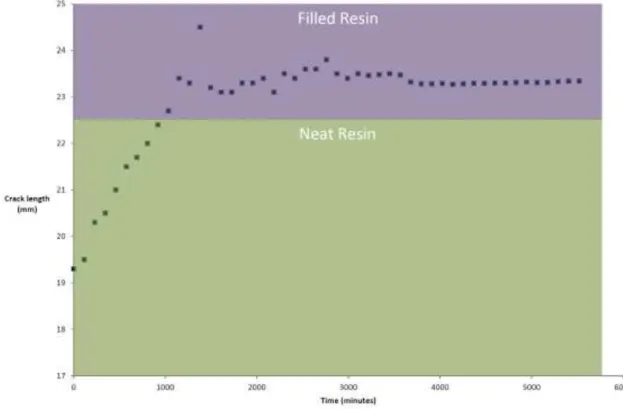Any correspondence concerning this service should be sent to the repository administrator: staff-oatao@inp-toulouse.fr
This is an author-deposited version published in: http://oatao.univ-toulouse.fr/ Eprints ID: 11861
To cite this version:
Tramis, Olivier and Nassiet, Valérie and Hassoune-Rhabbour, Bouchra and Fazzini, Marina Etude d’assemblages multimateriaux collés par un joint à
gradient de propriétés mecaniques. (2014) In: 5th International Symposium on
Aircraft Materials - ACMA 2014, 23 April 2014 - 26 April 2014 (Marrakech, Morocco).
O
pen
A
rchive
T
oulouse
A
rchive
O
uverte (
OATAO
)
OATAO is an open access repository that collects the work of Toulouse researchers and makes it freely available over the web where possible.
ACMA 2014 April 23-26, 2014 Marrakech, Morocco.
Multi-materials assemblies bonded by a copolymer-filled epoxy resin
Olivier Tramis1, Valérie Nassiet1, Bouchra Hassoune-Rhabbour1,Marina Fazzini1,, Laboratoire de Génie Production 47 Avenue.d’Azereix 65000 Tarbes. France.
Keywords: Multi-materials, Adherence, Wedge test, Bonding, Images correlation
In order to reduce the weight of embedded systems, we have to achieve innovative materials and new assembly process, such as adhesive bonding between different materials (metals, composites, polymers). The assemblies should ensure a good transfer of stress (thermal, mechanical) over a wide range of temperature. The choice of the adhesive will be the key to succeed. Within this context, we propose to add some copolymers to the adhesive, these latter allowing us to tune the viscoelastic properties of the adhesive. The copolymers also ensure a high thermal and mechanical stability for the adhesive, enabling its use at high temperature without degradation, and low temperature without brittleness. This study will allow us to further the understanding of the mechanisms which modulate adherence at the interface polymers/substrates, which are yet to be understood, as well as their physical and chemical properties.
Firstly, we made a preliminary test. Two aluminium substrates were bonded together by the mean of an epoxy resin. To ensure a good adherence (indeed it was, as all the cracks propagated in the middle of the joint), we’ve treated the substrate with phosphoric acid anodisation. We made two kinds of assemblies: an adhesive joint without copolymers, and an adhesive joint with copolymers. A wedge test was used to discriminate the adherence of each assembly. The crack propagation was followed by digital image correlation, ensuring a precision around 100 micrometers. We first demonstrated that the addition of copolymers improved the fracture toughness of the assembly: after the crack stabilized (this is the first crack due to the wedge insertion), it could not propagate further. We then designed a mixed joint, which allowed us to tune the viscoelastic properties of the adhesive, hence its adherence. The principle of the design is illustrated on figure 1. During a wedge test, the crack behave as follow: it first propagated in the unfilled resin, and then stopped when encountering the filled one, as shown on figure 2. This test validated the tuning of the crack by tuning the viscoelastic properties of the adhesive.
Figure 1. Scheme of a mixed adhesive joint. The mixing is made by diffusion of copolymers through the unfilled resin.
Secondly, we will work on multi materials bonding by a mixed adhesive. We will study various substrates – metallic, thermoplastic-based composites. We will identify and quantify the damaging of the interface by combining the wedge test with digital image correlation. We foresee, in the long term, to age assemblies in an aggressive medium in order to approach the in-life system.
References
M. Budzik, J. Jumel, K. Imielinska and M. E. R. Shanahan. Fracture in composite/aluminium joints of variable adhesive properties. The journal
of adhesion, vol 85 :736–754, 2009.
Figure 2. Crack length versus time. The crack propagates through an adhesive which has its properties tuned by copolymers addition. Green part: the crack propagates through the neat resin. Purple part: the crack stops in the filled resin.
